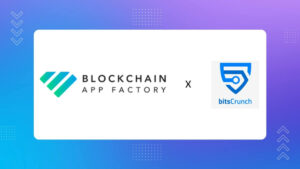The Lightning Network is a layer-2 protocol designed to enhance the scalability and speed of Bitcoin transactions. By creating a network of bidirectional payment channels, the Lightning Network enables faster, cheaper, and more private transactions. The Lightning Network offers advantages such as increased transaction throughput, lower fees compared to on-chain transactions, and improved privacy. However, challenges remain for widespread adoption, including network liquidity, user experience, security and channel monitoring, interoperability and standardization, and regulatory considerations. Overcoming these challenges will be essential for the Lightning Network to achieve its full potential and enable mainstream adoption of Bitcoin.
The Lightning Network
The Lightning Network is a layer-2 protocol designed to enhance the scalability and speed of transactions on the Bitcoin blockchain. It operates by creating a network of bidirectional payment channels between participants, enabling faster, cheaper, and more private transactions.
How The Lightning Network Works?
Here’s a step-by-step overview of how the Lightning Network works:
- Opening a payment channel: Two participants who want to transact with each other open a payment channel by creating a multi-signature transaction on the Bitcoin blockchain. This transaction allocates a certain amount of Bitcoin to the channel and requires the signatures of both participants to spend the funds.
- Off-chain transactions: Once the payment channel is open, participants can conduct an unlimited number of transactions off the Bitcoin blockchain. These transactions are private and do not require confirmation from the entire network. Instead, they are only known to the participants involved in the channel.
- Updating channel balances: Each time a transaction occurs within the payment channel, the participants update the channel balances to reflect the new ownership of funds. This update is done off-chain and is not recorded on the Bitcoin blockchain. Both participants must agree on the new balances and sign the updated transaction.
- Routing payments: If two participants do not have a direct payment channel, they can still transact through a process called routing. Payment channels in the Lightning Network can be linked together, allowing participants to send payments across multiple channels. This routing capability enables the network to find a path from the sender to the recipient, even if they do not have a direct channel.
- Closing the payment channel: When participants decide to close the payment channel, they broadcast the latest transaction state to the Bitcoin blockchain, settling the final balances. The participants can distribute the funds according to the agreed-upon channel balances. Closing the channel on the blockchain is optional and can be done at any time, allowing participants to maintain an open channel for an extended period if desired.
Advantages Of The Lightning Network

The Lightning Network offers several advantages. First, it significantly increases transaction throughput, as transactions occur off-chain and do not require confirmation from the entire Bitcoin network. This allows for near-instantaneous transactions and alleviates network congestion.
Second, transaction fees on the Lightning Network are typically much lower compared to on-chain Bitcoin transactions. Since only the opening and closing transactions are recorded on the blockchain, participants can conduct numerous off-chain transactions without incurring the associated blockchain fees.
Third, the Lightning Network provides improved privacy compared to on-chain transactions. Since most transactions occur off-chain, they are not publicly visible on the Bitcoin blockchain, enhancing the privacy of participants.
What are the Challenges Facing Widespread Adoption Of The Lightning Network?
While the Lightning Network shows promise in enhancing the scalability and usability of the Bitcoin network, it still faces several challenges in achieving widespread adoption. Some of these challenges include:
- Network Liquidity: One key challenge is the availability of network liquidity. To route payments across the Lightning Network, there must be sufficient funds in the payment channels. As the network grows, ensuring an adequate supply of liquidity becomes crucial. Liquidity imbalances or insufficient connectivity between nodes can hinder the routing of payments, making it difficult to achieve seamless and widespread adoption.
- User Experience: The user experience of using the Lightning Network needs to be intuitive and user-friendly for non-technical users. Setting up payment channels, managing channels, and routing payments should be simplified and accessible. Improving wallet interfaces, providing better onboarding processes, and enhancing user education are essential to overcome the complexity barrier and make Lightning Network more user-friendly.
- Security and Channel Monitoring: As the Lightning Network relies on off-chain transactions, ensuring the security of funds becomes paramount. Participants must actively monitor the network to detect potential security vulnerabilities, such as attempted theft or channel breaches. Developing robust security mechanisms, implementing effective channel monitoring tools, and educating users about best security practices are necessary to mitigate risks.
- Interoperability and Standardization: Interoperability among different Lightning Network implementations is vital for seamless and widespread adoption. Currently, different implementations may have slight variations or use different protocols, which can create challenges for nodes to communicate and transact across different implementations. Establishing common standards and protocols across the Lightning Network ecosystem is crucial to ensure interoperability and foster network growth.
- Regulatory and Legal Considerations: The regulatory landscape surrounding cryptocurrencies, including the Lightning Network, is still evolving. Uncertainty regarding compliance, taxation, and legal frameworks can create barriers for businesses and individuals looking to adopt the Lightning Network. Achieving regulatory clarity and addressing any potential legal challenges are necessary steps to foster broader adoption.
- Network Centralization: As the Lightning Network grows, there is a concern about network centralization. Large hubs with significant liquidity could potentially dominate the network, leading to a concentration of power and compromising the network’s decentralized nature. Implementing routing algorithms that incentivize decentralized routing and exploring strategies to encourage the proliferation of smaller, well-connected nodes are crucial to maintain a robust and decentralized Lightning Network.
Addressing these challenges requires ongoing research, development, and collaboration within the Lightning Network community. Overcoming liquidity constraints, improving user experience, enhancing security measures, establishing interoperability standards, navigating regulatory considerations, and ensuring network decentralization are critical steps to achieving widespread adoption of the Lightning Network.
Top 5 Solutions For Scaling Blockchain And Cryptocurrency Interoperability With The Lightning Network
The Lightning Network for Bitcoin offers a wide range of solutions that leverage its fast, scalable, and low-cost transaction capabilities. Some notable solutions include:
1. Lightning Network Daemon (LND)
The Lightning Network Daemon (LND) is an open-source implementation of the Lightning Network protocol. It is a software program developed by the Lightning Labs team and is available on the popular code hosting platform, GitHub. LND serves as the infrastructure layer for operating Lightning Network nodes, allowing users to participate in the Lightning Network and conduct off-chain Bitcoin transactions.
As a daemon, LND operates as a background process or service that runs on a user’s computer or server, continuously interacting with the Lightning Network. It provides a command-line interface (CLI) for managing and controlling Lightning Network operations, making it suitable for advanced users and developers.
Programming Language: Go
GitHub: https://github.com/lightningnetwork/lnd
2. Lit
Lit is an open-source project developed by the Digital Currency Initiative at MIT (MIT DCI). It is a lightweight implementation of the Lightning Network protocol and is available on GitHub for users and developers interested in exploring and experimenting with the Lightning Network technology.
Lit aims to provide a simplified and accessible platform for testing and understanding the Lightning Network. It is designed to be a user-friendly implementation, enabling individuals to set up and interact with Lightning Network nodes in a straightforward manner.
Programming Language: Go
GitHub: https://github.com/mit-dci/lit
3. Core Lightning
Core Lightning, also known as the Lightning Network Daemon (LND), is an open-source implementation of the Lightning Network protocol. It is developed by the Elements Project, a community-driven initiative focused on advancing open standards and technologies for the digital asset ecosystem.
Core Lightning provides a robust and feature-rich platform for operating Lightning Network nodes, enabling users to participate in the Lightning Network and conduct off-chain Bitcoin transactions. It offers a flexible and scalable infrastructure layer for Lightning Network operations, facilitating fast, secure, and low-cost payments.
Programming Language: C
GitHub: https://github.com/ElementsProject/lightning
4. Eclair
Eclair is an open-source implementation of the Lightning Network protocol developed by ACINQ, a leading company focused on building and deploying Bitcoin and Lightning Network solutions. Eclair serves as a robust and feature-rich platform for operating Lightning Network nodes, enabling users to participate in fast and secure off-chain Bitcoin transactions.
Programming Language: Scala
GitHub: https://github.com/ACINQ/eclair
5. Lightning Onion
Lightning Onion is a protocol used in the Lightning Network to enhance privacy and secure payment routing. It is implemented as part of the Lightning Network specification and is designed to obfuscate the information contained in Lightning Network payments, making them more private and resistant to network analysis attacks.
The Lightning Onion protocol utilizes a technique called onion routing, inspired by the Tor network. It adds layers of encryption to the payment information, ensuring that each intermediary node in the payment path can only decrypt and forward the necessary information without being able to view the entire payment route.
Programming Language: Go
GitHub: https://github.com/lightningnetwork/lightning-onion
The Lightning Network has the potential to revolutionize Bitcoin’s future by addressing scalability issues, enabling faster and cheaper transactions, enhancing user experience, fostering network effects and adoption, improving privacy, and fueling innovation. By creating a network of payment channels and conducting off-chain transactions, the Lightning Network can significantly increase Bitcoin’s transaction capacity, making it more practical for everyday use.
Written by: Jeffrey Ito | Edited by Arun Shakyawar
Aboout the Author
Jeffrey Ito is an accomplished author, entrepreneur, and bitcoin evangelist. He is the founder of smartbitcoininvestments.com, a leading resource on the subject of investing in bitcoin and alternative assets that serves readers all over the world.
LinkedIn: https://www.linkedin.com/in/jeffreyito
Read Also: Xapo Bank’s Lightning Integration: Lightning-Fast Bitcoin Payments with Near-Zero Fees
- SEO Powered Content & PR Distribution. Get Amplified Today.
- PlatoAiStream. Web3 Data Intelligence. Knowledge Amplified. Access Here.
- Minting the Future w Adryenn Ashley. Access Here.
- Buy and Sell Shares in PRE-IPO Companies with PREIPO®. Access Here.
- Source: https://alexablockchain.com/lightning-network-scaling-bitcoin-for-mainstream-adoption/
- :has
- :is
- :not
- $UP
- a
- Able
- About
- accessible
- accomplished
- According
- Achieve
- achieving
- across
- actively
- addressing
- Adds
- adopt
- Adoption
- advanced
- advancing
- advantages
- aims
- algorithms
- All
- allocates
- Allowing
- allows
- also
- alternative
- alternative assets
- among
- amount
- an
- analysis
- and
- any
- ARE
- AS
- asset
- Assets
- associated
- At
- Attacks
- attempted
- author
- availability
- available
- background
- balances
- barrier
- barriers
- BE
- becomes
- being
- BEST
- Better
- between
- Bitcoin
- Bitcoin Blockchain
- Bitcoin Network
- Bitcoin Payments
- bitcoin transactions
- blockchain
- both
- breaches
- broadcast
- broader
- Building
- businesses
- by
- called
- CAN
- capabilities
- Capacity
- Centralization
- certain
- challenge
- challenges
- Channel
- channels
- cheaper
- clarity
- Close
- closing
- code
- collaboration
- Common
- communicate
- community
- Community Driven
- company
- compared
- complexity
- compliance
- compromising
- computer
- concentration
- Concern
- Conduct
- conducting
- confirmation
- congestion
- Connectivity
- considerations
- constraints
- contained
- continuously
- controlling
- Core
- could
- create
- Creating
- critical
- crucial
- cryptocurrencies
- cryptocurrency
- Currency
- Currently
- Decentralization
- decentralized
- decide
- Decrypt
- deploying
- designed
- desired
- developed
- developers
- developing
- Development
- different
- difficult
- digital
- Digital Asset
- digital currency
- direct
- distribute
- do
- dominate
- done
- each
- ecosystem
- educating
- Education
- Effective
- effects
- elements
- enable
- enables
- enabling
- encourage
- encryption
- enhance
- enhancing
- ensure
- ensuring
- Entire
- Entrepreneur
- essential
- establishing
- Evangelist
- Even
- everyday
- evolving
- experience
- Exploring
- faces
- facilitating
- facing
- FAST
- faster
- Fees
- final
- Find
- First
- flexible
- focused
- For
- Forward
- Foster
- fostering
- founder
- frameworks
- from
- full
- funds
- future
- GitHub
- Grows
- Growth
- Have
- he
- hinder
- hosting
- How
- However
- HTTPS
- if
- implementation
- implemented
- implementing
- improved
- improving
- in
- incentivize
- include
- Including
- Increase
- increased
- Increases
- individuals
- information
- Infrastructure
- Initiative
- Innovation
- inspired
- instead
- integration
- interact
- interacting
- interested
- Interface
- interfaces
- intermediary
- Interoperability
- intuitive
- investing
- involved
- issues
- IT
- ITS
- jpg
- Key
- known
- Labs
- landscape
- language
- large
- latest
- layer
- layers
- leading
- Legal
- Leverage
- lightning
- lightning labs
- Lightning Network
- lightning-fast
- lightweight
- linked
- Liquidity
- LND
- looking
- low-cost
- Mainstream
- mainstream adoption
- maintain
- make
- Making
- managing
- manner
- max-width
- May..
- measures
- mechanisms
- MIT
- Mitigate
- Monitor
- monitoring
- more
- most
- much
- multiple
- must
- Nature
- navigating
- necessary
- needs
- network
- network effects
- New
- node
- nodes
- non-technical
- notable
- number
- numerous
- of
- off
- Offers
- on
- On-Chain
- Onboarding
- once
- ongoing
- only
- open
- open source
- opening
- operates
- operating
- Operations
- or
- Other
- over
- Overcome
- overview
- ownership
- Paramount
- part
- participants
- participate
- path
- payment
- Payment channels
- payments
- period
- platform
- plato
- Plato Data Intelligence
- PlatoData
- Popular
- potential
- potentially
- power
- Practical
- practices
- privacy
- private
- process
- processes
- Program
- project
- promise
- protocol
- protocols
- provide
- provides
- providing
- publicly
- range
- readers
- recorded
- reflect
- regarding
- regulatory
- regulatory landscape
- remain
- require
- requires
- research
- resistant
- resource
- revolutionize
- risks
- robust
- Route
- routing
- Scalability
- scalable
- scaling
- seamless
- secure
- security
- Security Measures
- send
- sender
- serves
- service
- set
- setting
- several
- should
- Shows
- sign
- Signatures
- significant
- significantly
- simplified
- since
- smaller
- Software
- Solutions
- some
- specification
- speed
- spend
- standards
- State
- Steps
- Still
- straightforward
- strategies
- subject
- such
- sufficient
- suitable
- supply
- Surrounding
- Taxation
- team
- Technologies
- Technology
- Testing
- that
- The
- the information
- The Lightning Network
- the world
- theft
- Them
- There.
- These
- they
- this
- Through
- throughput
- time
- to
- together
- tools
- Tor
- transact
- transaction
- Transactions
- two
- typically
- Uncertainty
- understanding
- unlimited
- Update
- updated
- usability
- use
- used
- User
- User Experience
- user-friendly
- users
- using
- utilizes
- View
- visible
- vital
- Vulnerabilities
- Wallet
- want
- which
- WHO
- wide
- Wide range
- widespread
- will
- with
- within
- without
- works
- world
- zephyrnet












